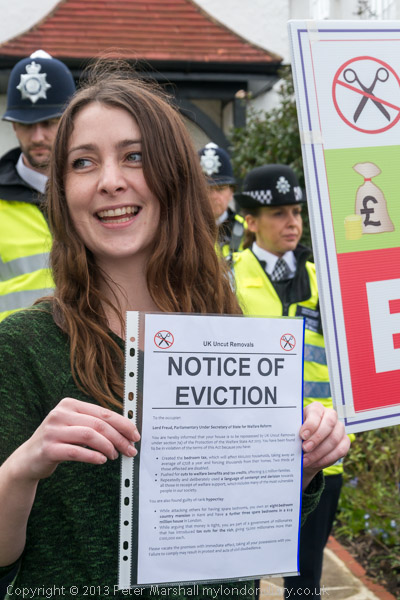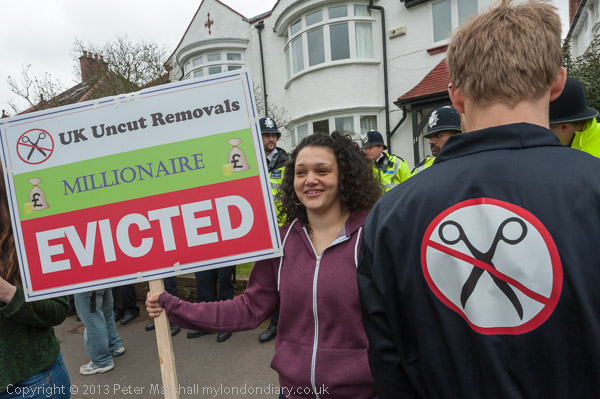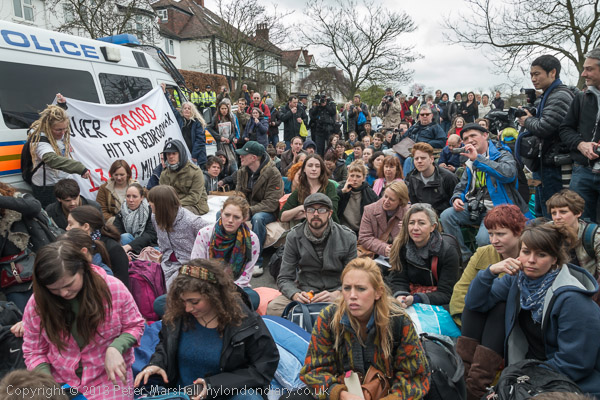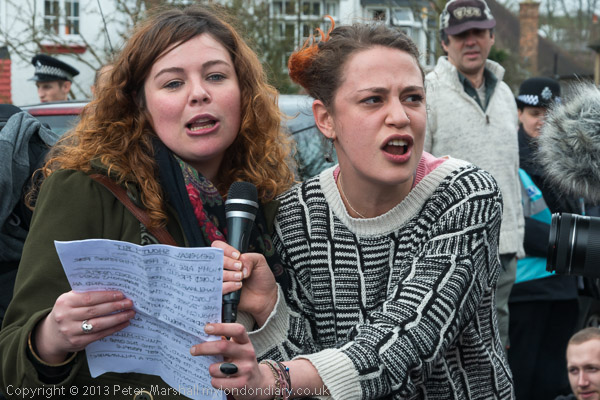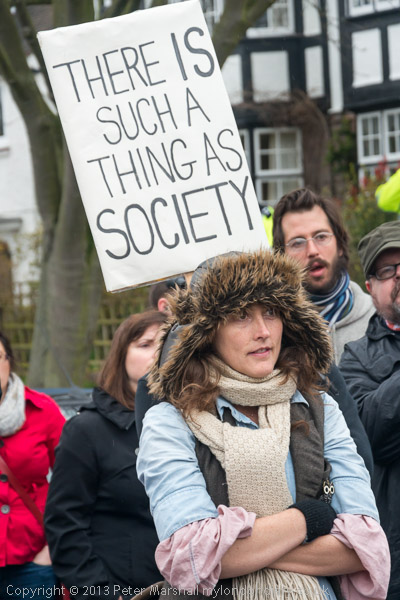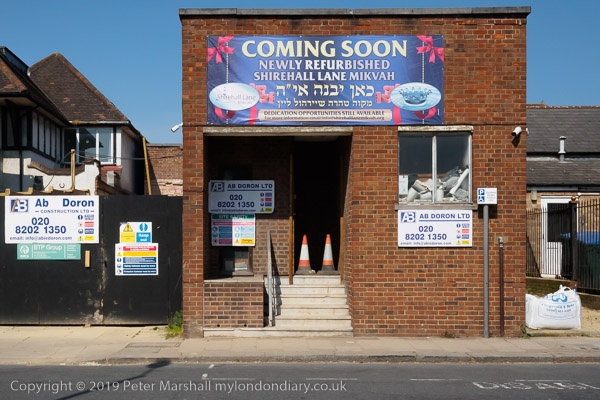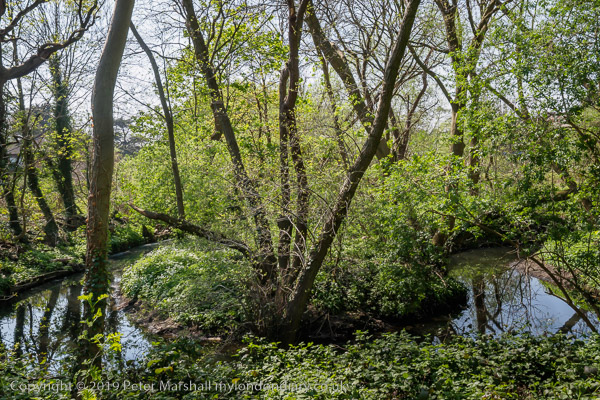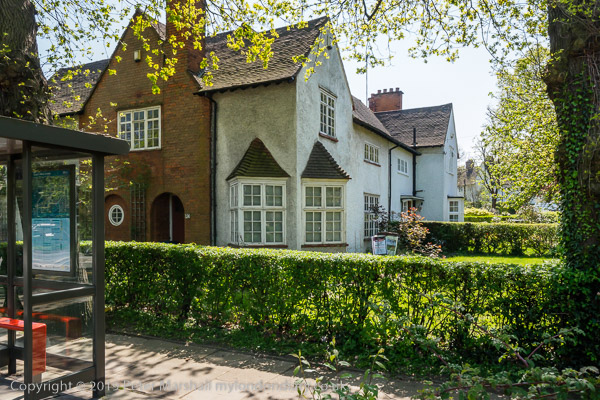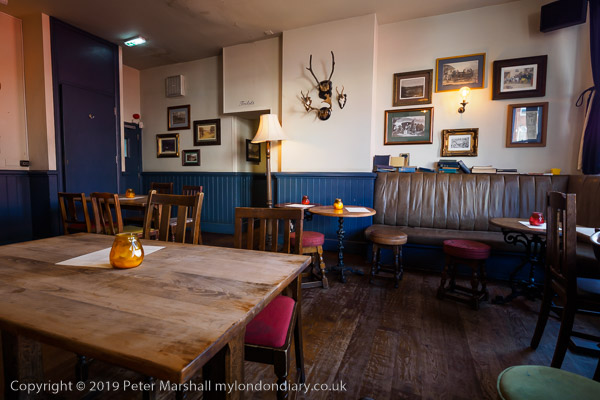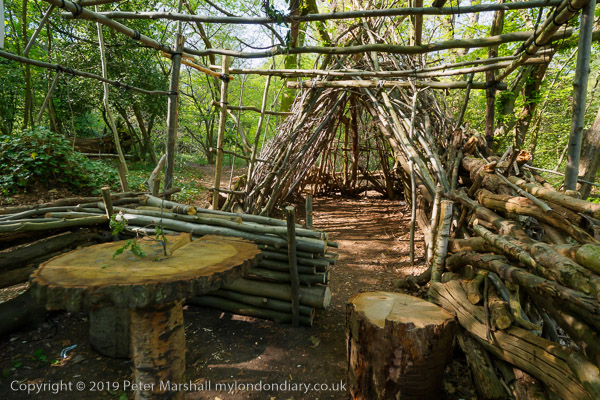Who Wants to Evict a Millionaire? On Saturday 13th April UK Uncut led a protest against the benefit cuts and new taxes being brought in that will most severely impact many of the poorest and particularly the disabled in our society with a lively peaceful protest against Tory Peer Lord Freud, one of the millionaire architects of the bedroom tax.
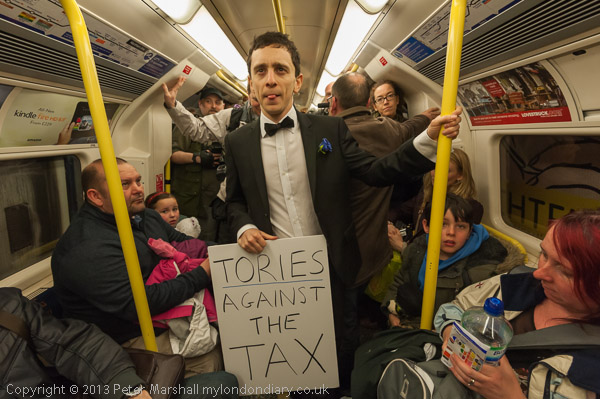
David Freud, a grandson of Sigmund, had made a fortune as a merchant banker before retiring in 2006 when he was asked by New Labour’s Prime Minister Tony Blair to review the UK’s welfare-to-work system. His 2008 report ‘Reducing dependency, increasing opportunity: options for the future of welfare‘ included making use of private companies to help lone parents and people on Incapacity Benefit back into work and for a single working-age benefit payment to replace the whole range of those currently being paid.
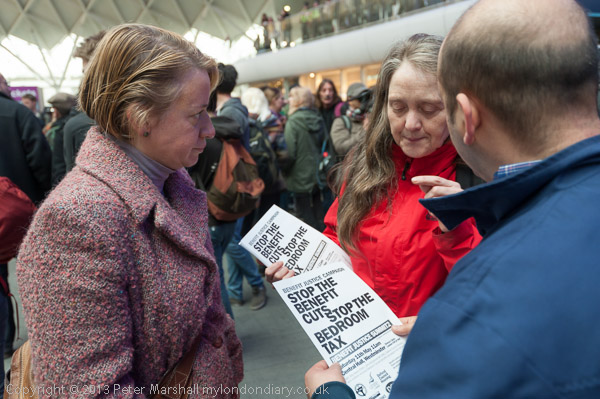
Many in the Labour Party found his ideas unpalatable, and Gordon Brown refused as prime minister to cut welfare spending. Freud then switched to supporting the Conservatives and in 2009 was made a life peer and became a Tory shadow minister. After the 2010 election Freud became Parliamentary Under Secretary of State for Welfare Reform at the Department for Work and Pensions.
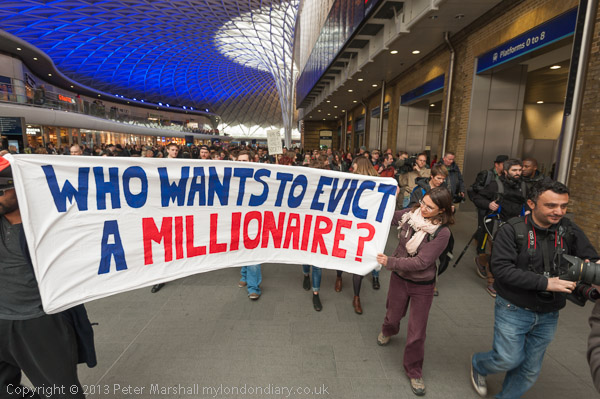
Iain Duncan Smith had become Secretary of State for Work and Pensions and took up Freud’s ideas, working on the introduction of Universal Credit, introducing a new Work Programme under which claimants could be sanctioned, losing benefits for up to three years if they were judged to be failing to cooperate and making real terms cuts in benefits.
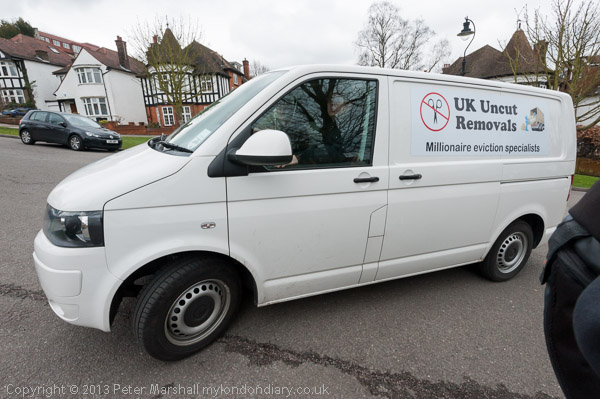
Damaging to many as these policies were in principle, they were made much harsher by the sheer incompetence Duncan Smith imposed on the Department of Work and Pensions and his failure to realise or empathise with the very different lives of poorer people. For him or Freud a delay of five weeks in receiving payments would be no problem – their resources would seem them over and they could easily borrow from family or friends – or even banks.
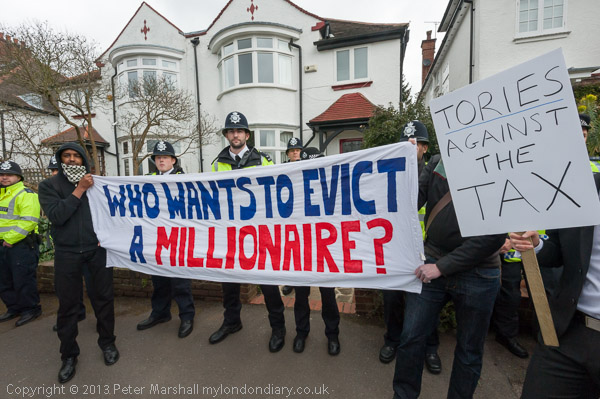
But those on benefits had no resources to fall back on. If payments were delayed or they were sanctioned they would have no money to buy food, heat their homes, pay rent.
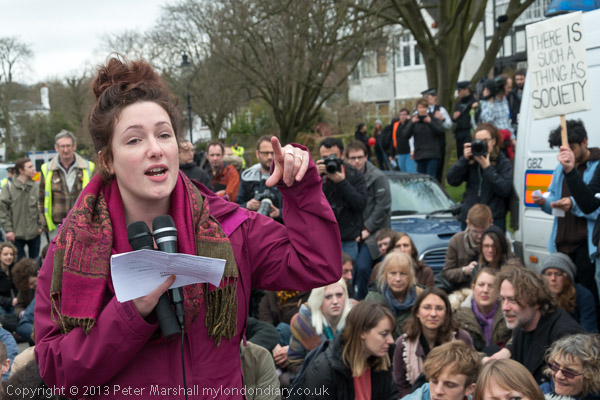
Famously in April 2103 after a claimant had told the BBC he had £53 per week after paying housing costs, Duncan Smith replied that he could live on £53 per week. And in 2015 he “was criticised after the DWP admitted publishing fake testimonies of claimants enjoying their benefits cuts. Later the same month, publication of statistics showed 2,380 people died in a 3-year period shortly after a work capability assessment declared them fit for work.”

It was the policies of Freud and Duncan Smith that led to the huge increase in the need for food banks. In 2010-11 the Trussell Trust distributed 61,000 food parcels. By 2022-3 that annual figure was “close to 3 million, almost a fiftyfold increase.“
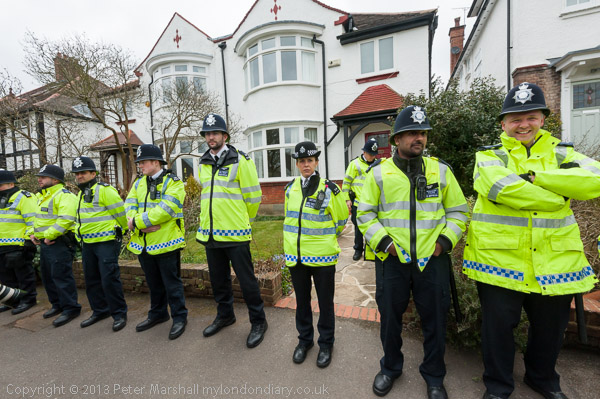
The protest was particularly directed against the ‘Bedroom Tax’, which penalised tenants in public housing by reducing their Housing Benefit if they were judged to have more rooms than they needed. It was meant to reduce the costs to and encourage council tenants to move to smaller accommodation – but as this was seldom available its result was simply to impoverish them. And it hit some groups particularly the disabled hardest, as they might have to move away from properties that had been suitable and adapted to their needs.

But there were also other measures, including a benefits cap which was being brought in across the country in stages to put a strict limit on the amounts that people may receive. It seemed inevitable that this would lead to many thousands being evicted, particularly in high rent areas such as London, as well as a cut in legal aid and council tax benefits and an end to disability living allowances.

Those benefits which remain will rise by less than inflation – a cut in real terms. And these cuts were taking place at the same time as the 50p tax rate was being abolished, saving the UK’s 13,000 millionaires around £100,000 each.

I went with the largest group of the protesters, who met at King’s Cross to travel to an undisclosed location, which turned out to be the Highgate home of Tory Peer Lord Freud.

Outside his home there were a number of performances and speeches which you can read more about at the link below to My London Diary. And the protesters gave a huge cheer when it was announced that disabled activists from DPAC (Disabled Persons Against Cuts) had visited the home of Ian Duncan Smith and also delivered an eviction notice there.
More about the protest and many more pictures on My London Diary at Who wants to evict a Millionaire?
Flickr – Facebook – My London Diary – Hull Photos – Lea Valley – Paris
London’s Industrial Heritage – London Photos
All photographs on this page are copyright © Peter Marshall.
Contact me to buy prints or licence to reproduce.









































